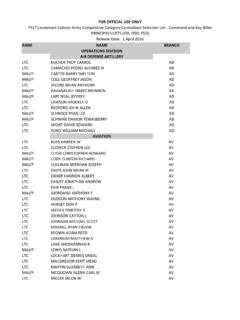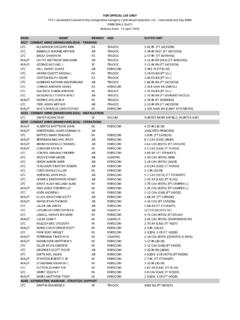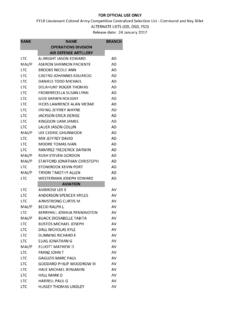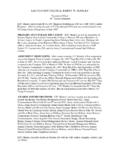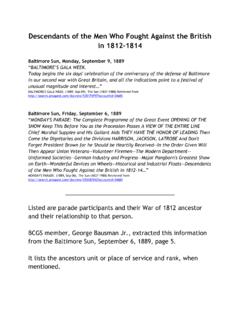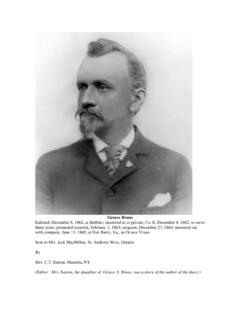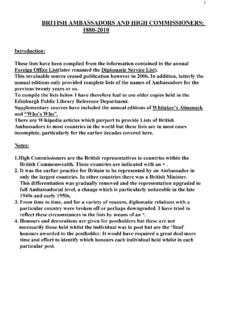Transcription of Friction and Future War - Air University
1 52 . Friction and Future War barry D. Watts lll~ +llmmlllllmB~. Im ".I I III+IP'AV.~ +r ~- A popular Government,without popular information or the means ofacquiring it,is but a Prologue to a Farce or a Tragedy; orperhaps will forever govern ignorance;And a people who mean to be their ownGovernors,must arm themselves with the power whichknowledge MADISON to W. T. BARRYA ugust 4,1822 CLAUSEWITZIANFRICTION ANDFUTURE WARB arry D. WattsMcNair Paper 52 October 1996 INSTITUTE FOR NATIONAL STRATEGIC STUDIESNATIONAL DEFENSE UNIVERSITYW ashington, DCNATIONAL DEFENSE UNIVERSITYD President: lieutenant General Ervin J. Rokke, USAFa Vice President: Ambassador William G. WalkerINSTITUTE FOR NATIONAL STRATEGIC STUDIESD Director & Publisher: Dr.
2 Hans A. BinnendijkPublications Directorate & NDU PressFort Lesley J. McNair, Washington, DC 20319-6000D Phone:(202)685-4210 a Facsimile: (202) 685-4378D Director & Managing Editor: Dr. Frederick T. KileyD Vice Director & General Editor: Major Thomas W. Krise, USAFD Chief, Editorial & Publications Branch: Mr. George C. MaerzD Senior Editor: Ms. Mary A. SommervilleD Editor: Mr. Jonathan W. PierceD Editor for this issue: Dr. Frederick T. KileyD Distribution Manager: Mrs. Myrna MyersD Secretary: Mrs. Laura Hall_____From time to time, DSFSS publishes McNair Papers to provoke thought andinform discussion on issues of national security in the post-Cold Warera.
3 These monographs present current topics related to national securitystrategy and policy, defense resource management, international affairs,civil-military relations, military technology, and joint, combined, andcoalition , conclusions, and recommendations, expressed or implied, are those ofthe authors. They do not necessarily reflect the views of the National DefenseUniversity, the. Department of Defense, or any other Government for public release; distribution of this publication may be quoted or reprinted without furtherpermission, with credit to the Institute for National Strategic Studies,Washington, DC. A courtesy copy of reviews and tearsheets would sale by the Government Printing OfficeSuperintendent of Documents, Mail Stop: SSOP, Washington, DC' 20402-9328 ISSN 1071-7552 CONTENTSPREFACE.
4 V1. THE ONCE AND Future PROBLEMOF GENERAL Friction .. 12. CLAUSEWITZ'S DEVELOPMENT OF THEUNIFIED CONCEPT OF A GENERAL Friction (GESAMTBEGRIFF EINER ALLGEMEINENFRIKTION) .. 73. SCHARNHORST'S CLARITY ABOUT WARAS IT ACTUALLY IS {EIGENTLICHE KRIEG} .. 154. CLAUSEWITZ'S MATURE CONCEPTOF GENERAL Friction .. 275. Friction BEFORE, DURING, ANDAFTER DESERT STORM .. 376. THE INTRACTABILITY OF STRATEGICSURPRISE .. 597. THE INACCESSIBILITY OF CRITICALINFORMATION .. 698. EVOLUTIONARY BIOLOGY AS A SOURCEOF Friction AND EXEMPLAR FOR THEORY .. 799. "SITUATION AWARENESS" INAIR-TO-AIR COMBAT AND Friction .. 9110. NONLINEARITY AND A MODERNTAXONOMY OF GENERAL Friction .
5 10511. IMPLICATIONS FOR Future WAR,ITS THEORY, AND ITS CONDUCT .. 125 ABOUT THE AUTHOR .. 133 PREFACEThe original version of this paper, completed in December 1995,was condensed by Williamson Murray, editor ofBrassey's MershonAmerican Defense Annual, for the 1996-1997 edition. Thiscondensation did not include three entire sections that are part ofthis present study (chapter 3 on Schamhorst's influence, chapter 6on strategic surprise, and chapter 9, which contained air combatdata bearing on Friction 's role in Future war). Dr. Murray also cutsignificant parts of other sections, especially in chapter 10, andprecipitated a fair amount of rewriting as he and I worked toward aversion that met his length constraint but still reflected the essenceof the original essay.
6 While this process led to many textualimprovements, it did not generate any substantive impetus for substantive changes came from AlanBeyerchen, of the Ohio State University , in May 1996. , a formidable student of both Clausewitz and nonlineardynamics, raised an important issue concerning possible measuresof general Friction that harked back to Andy Marshall's query, inlate 1995, as to whether the "magnitude" of general Friction hasbeen declining in recent decades. After much discussion back andforth, I added several pages of new material in chapters 5 and 9 thatintroduced decision-cycle times and viable option sets in"possibility space" as candidate additions prompted others, primarily in chapter expanding and improving the treatment of nonlinearity, thediscussion of chance was thoroughly revised in light ofPoincare's1903 essay on the same subject, again after much discussion the time these changes had been completed.
7 Thecondensation of the original essay for Brassey's Mershon AmericanDefense Annual was far enough along that the best I could do wasto make its text consistent with the post-Beyerchen version. Therewas no room to incorporate substantive changes. Thus, the presenttext restores most of the original and goes a step beyond itconceptually; this is one reason why the Director of the NDU Press,Dr. Frederick Kiley, elected to go ahead with separate publicationof the complete essay. Dr. Kiley and I then decided to modify thetitle of this longer version, to make it distinguishable from areference , a special word of thanks is due Andrew Marshall, theDirector of Net Assessment since 1973.
8 He encouraged this projectfrom the outset and, as always, provided probing questions at everystep of the , MarylandSeptember 1996 VICLAUSEWITZIAN FRICTIONAND Future ONCE AND FUTUREPROBLEM OF GENERALFRICTIONS ince the end of the Cold War, there has been growingdiscussion of the possibility that technological advances in themeans of combat would produce ftmdamental changes in how futurewars will be fought. A number of observers have suggested that thenature of war itself would be transformed. Some proponents of thisview have gone so far as to predict that these changes would includegreat reductions in, if not the outright elimination of, the variousimpediments to timely and effective action in war for which thePrussian theorist and soldier Carl von Clausewitz (1780-1831)introduced the term " Friction .
9 " Friction in war, of course, has a longhistorical lineage. It predates Clausewitz by centuries and hasremained a stubbornly recurring factor in combat outcomes rightdown to the 1991 Gulf War. In looking to the Future , a seminalquestion is whether Clausewitzian Friction would succumb to thechanges in leading-edge warfare that may lie ahead, or whether suchimpediments reflect more enduring aspects of war that technologycan but marginally affect. It is this question that the present essaywill 's earliest known use of the term " Friction " to"describe the effect of reality on ideas and intentions in war"occurred in a 29 September letter written to his Future wife, Marievon Briihl, less than 3 weeks before France defeated Prussia at the2 CLAUSEWITZIAN Friction AND Future WARtwin battles of Jena and Auerstadt on 14 October 1806.
10 ' By thetime Clausewitz died in 1831, his original insight regardingfriction's debilitating effects on the campaign of 1806 had growninto a central theme of the unfinished manuscript that his widowpublished as Vom Kriege [On War].2 American military officers today most often refer toClausewitz's unified concept of a general Friction (Gesamtbegriffeiner allgemeinen Friktion) as the "fog and Friction " of Thediverse difficulties and impediments to the effective use of militaryforce that those possessing military experience instinctivelyassociate with this phrase are generally acknowledged to haveplayed significant roles in most, if not all, of the wars sinceClausewitz's time.
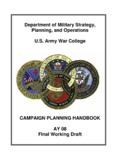


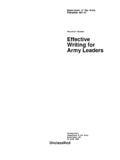
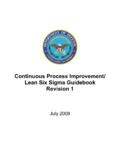
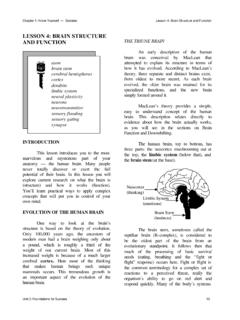

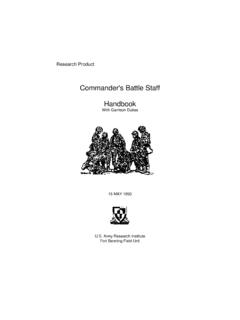
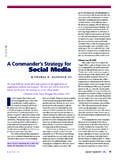
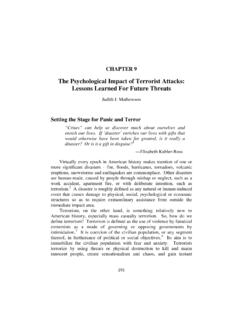
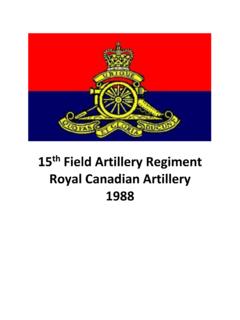
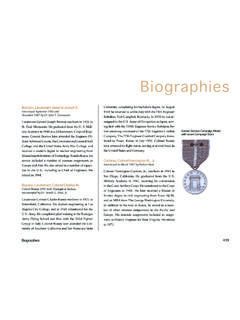
![History of the School of Army Health[1] - RAAMC](/cache/preview/8/9/e/f/4/4/9/d/thumb-89ef449d205d5c94aa411cd4320de30b.jpg)
